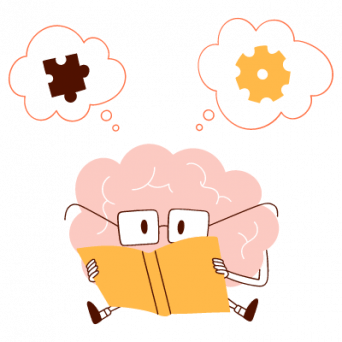We Are Hardwired for Connection
The innate desire to connect has been a driving force throughout human history, shaping our communities, relationships, and the way we communicate. Sharing experiences, emotions, and ideas face-to-face is deeply ingrained in our social fabric and is an integral part of the psychological makeup of human beings. According to Dr. Matthew Lieberman, a professor and social cognitive neuroscience lab director at UCLA, social connection is as important as food and shelter. Lieberman states, “Being socially connected is our brain’s lifelong passion. It’s been baked into our operating system for tens of millions of year
In today’s increasingly digital and dispersed world, maintaining these crucial bonds that are at the root of our humanity can be a challenge. Text chats, asynchronous forums, and static video calls have their utility, but often fall short in capturing the richness of human connection, leaving us yearning for a more realistic and authentic way to engage with others. Shared visual spaces go beyond the constraints of traditional online communication methods by offering a dynamic and real-time virtual environment where individuals can truly connect, collaborate, and share ideas as if they were physically present.
The Cognitive Psychology of Shared Visual Spaces
Cognitive psychology plays a significant role in understanding the power of shared visual spaces, as it explores how mental processes influence our behavior, emotions, and perceptions. The real-time, visual dimension not only enhances communication but also taps into fundamental cognitive mechanisms that contribute to a more authentic and impactful human connection in virtual environments. Platforms like Office AnyWhere leverage these cognitive principles by creating virtual spaces that align with our natural cognitive tendencies. Office AnyWhere takes it a step further by providing spaces that feel like real places, unlocking the full potential of shared visual interaction. When people can interact and move around in virtual space just as they would in real life, it adds elements of comfort and security through providing a familiar, realistic, life-like experience. Let’s further examine the role of cognitive psychology in shared visual spaces by exploring the concept of the connected brain vs. the safety brain.
The Connected Brain vs. the Safety Brain:
Our brains operate in two main modes: the connected brain and the safety brain. According to The Center for Collaborative Awareness, our brains have two main functions that have emerged through millions of years of evolution—to connect us for growth and to keep us safe. The development of our society has made the safety brain our first and main mode of interaction with the world. In keeping the connected brain as a secondary mode, we restrict our creativity, productivity, and resiliency.
The connected brain thrives on social interaction, collaboration, and exploration. It seeks out new information, fosters empathy, and is driven by a desire to connect with others. In contrast, the safety brain prioritizes security, vigilance, and protecting ourselves from potential threats. It’s the reason we might hesitate to share our ideas in a large group or feel apprehension when joining a new community.
Shared visual spaces, with their immersive features and real-time interaction, have the unique ability to bridge the gap between these two brain modes. By activating the connected brain and reducing the influence of the safety brain, shared visual spaces like Office AnyWhere unlock the full potential of communities to connect, collaborate, and achieve more. Here’s how:
Social Cues Foster Connection
- Cognitive Process: Nonverbal cues like smiles, nods, and shared laughter deactivate the safety brain’s threat response, allowing social bonds to form and trust to build.
- Impact: Office AnyWhere creates a safe environment through alleviating apprehensions and fostering a sense of genuine connection through rich social cues that go beyond text-based or asynchronous communication. This visualization reduces misunderstandings and promotes open communication.

